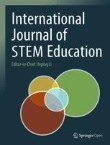- Social Sciences Citation Index (SSCI)
- SCOPUS
- CNKI
- EBSCO Discovery Service
- ERIC
- ERIH PLUS
- Google Scholar
- OCLC WorldCat Discovery Service
- ProQuest Advanced Technologies & Aerospace Database
- ProQuest Computer Science
- ProQuest Environmental Science
- ProQuest Engineering
- ProQuest Agricultural & Environmental Science Database
- ProQuest Biological Science Database
- ProQuest Central
- ProQuest Earth Atmospheric & Aquatic Science Database
- ProQuest Education Database
- ProQuest Materials Science & Engineering Database
- ProQuest Natural Science Collection
- ProQuest SciTech Premium Collection
- ProQuest Social Science Collection
- ProQuest Technology Collection
- ProQuest-ExLibris Summon
- ProQuest-ExLibris Primo
- UGC-CARE List (India)
- TD Net Discovery Service
- Science Citation Index Expanded (SciSearch)
- SCImago
- Norwegian Register for Scientific Journals and Series
- Navar
- Journal Citation Reports/Social Sciences Edition
- Journal Citation Reports/Science Edition
- Gale
- Dimensions
- DOAJ
- Current Contents / Social & Behavioral Sciences
- Chinese Academy of Sciences (CAS) - GoOA
Supporting students with disabilities and limited English proficiency: STEM educator professional development participation and perceived utility
Professional development offerings assist K–12 educators in addressing new and evolving classroom dynamics, circumstances, and situations. With the emerging demands of an increasingly science, technology, engi...

